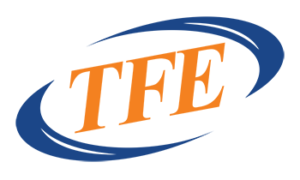E-rate updates: What’s new in the next wave of funding
The E-rate program is a government-funded initiative that provides up to 90 percent discounts to eligible schools and libraries for IT and internet-related purchases. E-rate’s goal is to ensure that all schools and libraries have access to high-speed broadband internet and information systems.
Only non-profit elementary and secondary schools are eligible for E-rate discounts. For-profit learning institutions and those with endowments exceeding $50 million do not qualify. An eligible library must fit the definition described in the Library Services and Technology Act of 1996 (LSTA) (20 U.S.C. Section 9122).
The services and products eligible for E-rate discounts are grouped into three main categories:
- Category I: Data Transmission and/or Internet Access
- Category II: Internal Connections, Basic Maintenance of Internal Connections, and Managed Internal Broadband Services
- Miscellaneous: The various costs associated with category I and category II services and products, such as equipment leases, freight insurance, and surcharges
E-rate funding is commissioned and administered annually by the Universal Service Administrative Company (USAC) under the Federal Communications Commission’s (FCC) directives. The FCC changes the program’s rules and guidelines regularly to reflect the prevailing economic and technology landscapes. For instance, the FCC releases an updated Eligible Services List (ESL) for each funding year. Here are some of the notable changes in the next wave of E-rate funding that might affect your school’s budget:
Applicant budgets will reset with the 2021 funding year
Beginning in the funding year 2021, the FCC will reset all applicant budgets and begin fixed five-year budget cycles. 2020 was the transition year for these new multi-year contracts, and the first funding cycle begins in 2021 and ends in 2025. This means that all the budget factors will be fixed for the entire five-year period and that budgets will be adjusted for inflation only at the start of each cycle. Also, unspent funds from one funding cycle will not be rolled over to the next cycle.
Minimum budgets have increased
The FCC will increase the minimum category II funding floor for each eligible school and library from $9,200 to $25,000 starting in the funding year 2021-2022. This is part of the FCC’s effort to ensure that all schools and libraries, including small rural institutions, can deploy internal network connections through the E-rate program.
Budgets will not be determined on per school basis
School budgets will be based on the student count at the beginning of each five-year funding cycle, while library budgets will be determined per square footage. Eligible schools are entitled to $167 per full-time student, while libraries can file for $4.50 per square foot. You can adjust the student count in your school or library’s square footage at any time during the funding period.
Additionally, budgets will be calculated and administered on a district-wide (for schools) and system-wide (for libraries) basis. Districts with less than ten schools can calculate their budgets using either the per-student allocation or by summing up the $25,000 minimum entry point for all the schools in the district — whichever is greater.
Read the FCC’s Report and Order publication for more information on these and other E-rate updates for upcoming funding waves.
Other updates include:
- BEAR PIN Removal Update
- USAC Seeks Feedback on User Experience-Related IT Enhancements
- Notice for FCC Form 500 Filers Reporting Equipment Transfers
- Emergency Connectivity Fund Program
- Change to One Portal Dashboard
- Update on FY2022 FCC Form 470
- Getting Started with the Emergency Connectivity Fund (ECF) Program
For more information about the latest updates, visit this website.
Are you looking to make the most out of your school’s or library’s E-rate funding? TFE is the right IT partner when it comes to procuring and implementing IT equipment and services. We go above and beyond in empowering Texas schools and businesses to grow through technical innovations. Harness our expertise and experience in the IT industry to turn every available resource into functional digital solutions. Don’t hesitate to reach out with inquiries about what we do.










